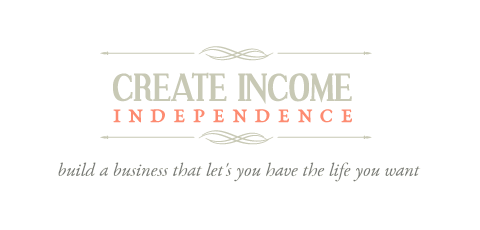
Let’s look at what procrastination is. It’s defined as the act of putting off or delaying an action to a later time.
Who has not done that? The problem comes when we do it all the time and don’t accomplish our goals, especially when we have big goals, such as creating our business.
Why do we procrastinate?
I believe we procrastinate because the task we have to do is simply not appealing to us and we want to pull it off. Or, we are overwhelmed by what we have to do, so we shut down our brains and delay taking action..
But, since we probably have to do it or need to do it, let’s look at how we can work around it.
You may have the best intentions to work on your project, maybe you plan all the great things you’ll accomplish. Science shows that it’s your future self that has a vision of these great goals. In reality, you have to do them in the here and now.
That’s where the trouble is. Only the present you can take action. And the present you resists as long as possible.
Your brain values long-term benefits when they are in the future, but values immediate gratification. The problem is not doing the work, it’s starting the work.
So the key is to bring future consequences into the present.
Here’s an example that proves the point. You have a project that’s do in a week. That’s a long way off to your brain and you put it off. Suddenly, you realize the deadline is tomorrow. You move into action and get it done in an afternoon. Thus proving it’s not doing the work, but finding the motivation to start. And the approaching deadline provided motivation.
Strategies to stop procrastinating
There are several strategies you can use to get you to reach the action point sooner.
- make the task more achievable
- make the rewards of taking action more immediate
- make the consequences of waiting more immediate
Each of these has the same purpose, making it easier for you to get started.
Make the task more achievable
We’ve already explained that it’s starting the task that is so difficult. So the idea with this strategy is to make the first step so small that it’s easy to do. Break the steps down into small pieces, so your brain can’t fight you.
Once you start doing something, it’s easier to continue or to take a break and go back to it without a problem.
Here’s an example from my own experience. When I am going to cook a dinner that’s involved and has many steps, I get overwhelmed. The recipe looked good when I first found it, but I get annoyed when it’s time to do it. I find this solution works for me, I start small.
First, I read the recipe. Next, I take out all the required ingredients and put them on the counter. Then, I get out the pots and pans I’ll need along with the measuring cups, spoon, and any tools. At this point, I walk away for a little while. When I go back, it doesn’t seem so difficult anymore. Now, either I start chopping and prepping and continue cooking, or I take a short break and when I return I do the rest of the meal.
Another way to break done the work is to set a timer and only work for a stated period of time, for instance, 15- minutes, and see how much you can accomplish in that time, and then do another 15-minute interval for an overall longer total time.
Make the rewards of taking action more immediate
This strategy uses a tactic called “temptation bundling”. You combine the tasks you should do with the tasks you want to do. In other words, you pair the things you love to do with the things you hate to do, as a way to stop procrastinating.
The formula looks like this; You will only do [thing you love] while doing [thing you are procrastinating].
For instance, I will watch my favorite podcast while taking a walk.
The key is to make a list of the things you love to do and the things that you need to do, but are putting off. However, they need to be compatible. One can’t be long and difficult while the other is simple and easy. Bundle one task that requires focus with one that doesn’t require as much attention, or you will be trying to multitask and not get anything done. Listening to music while paying bills is a great pairing.
Make the consequences of waiting more immediate
A consequence is the result of an action taken or not taken. It’s not always obvious at the moment what the consequence will be sometime in the future. Therefore, in order to stop procrastinating, you need to create a meaningful consequence now. One way to make things immediate would be to commit to taking action.
There are several ways to commit.
You can tell a friend or family member that you are going to start a new habit. For example, let’s say you want to start eating healthier. You tell them your goal and what you want to accomplish. You can invite them to do it with you or ask them to watch over your actions and make sure you do it.
They will tell you when you’re not following through and that gives you the incentive to continue. This works because you don’t want to look like a failure to them, and you don’t want them to nag.
Another way to commit is to pay for something in advance. If you don’t use the product you lose the money or an opportunity. This gives you a stake in your actions. For instance, if you want to learn something new, you can pay for a course in advance or you book an appointment, meeting, or consultation. Once you take this step, it’s a commitment. It’s not so easy to cancel and more likely that you’ll follow through.
Summary
We described three strategies to help you stop procrastinating. Try them all and when you find what works best, use it consistently to become more productive and accomplish your goals faster.
A Special Offer
My e-course, The Idea Finder Course. is now available for free. There are 10 lessons about finding your passion, your ideal life, and the right niche to start your business. Instead, of working for someone, learn to provide for yourself, and not depend on a job.
Freedom and Independence have always been important to me and I want you to have them. One way is to get control of your income, and wealth, and determine how you live your life.
It’s now FREE with no strings attached.
The Solo Entrepreneur’s Guide
To make sure you get access to our monthly newsletter, subscribe to The Solo Entrepreneur’s Guide.
The valuable content in that publication will help you transition from the job world and create a self-reliant income, live life your way, and achieve wealth, freedom, and independence.


Leave a Reply